Choosing the Right Handmade Japanese Knife: A Comprehensive Buying Guide
Table of Contents
ToggleChoosing the Right Handmade Japanese Knife: A Comprehensive Buying Guide
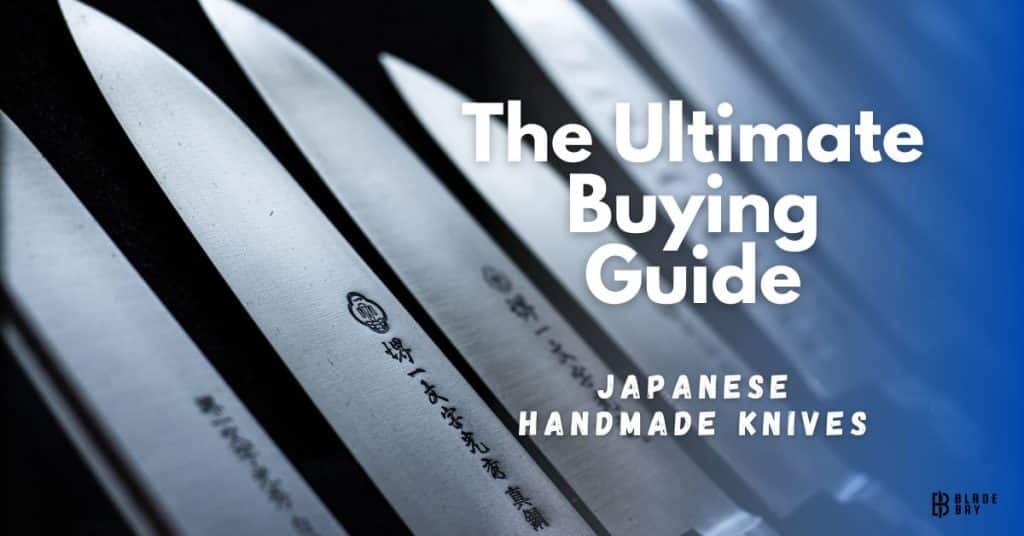
Are you in the market for a new high-quality kitchen knife? Consider the elegance and precision of a handmade Japanese knife. Japanese knives are known for their exceptional sharpness, durability, and beauty, making them a must-have for any serious chef or knife enthusiast. However, with so many options available, it can be overwhelming to choose the right one.
Fear not, as this complete guide for buying handmade Japanese knives will provide you with all the tips and tricks you need to make an informed decision. From the types of steel to handle materials, we’ll cover everything you need to know to find the perfect Japanese knife for your needs. So, let’s dive in and explore the fascinating world of Japanese cutlery!
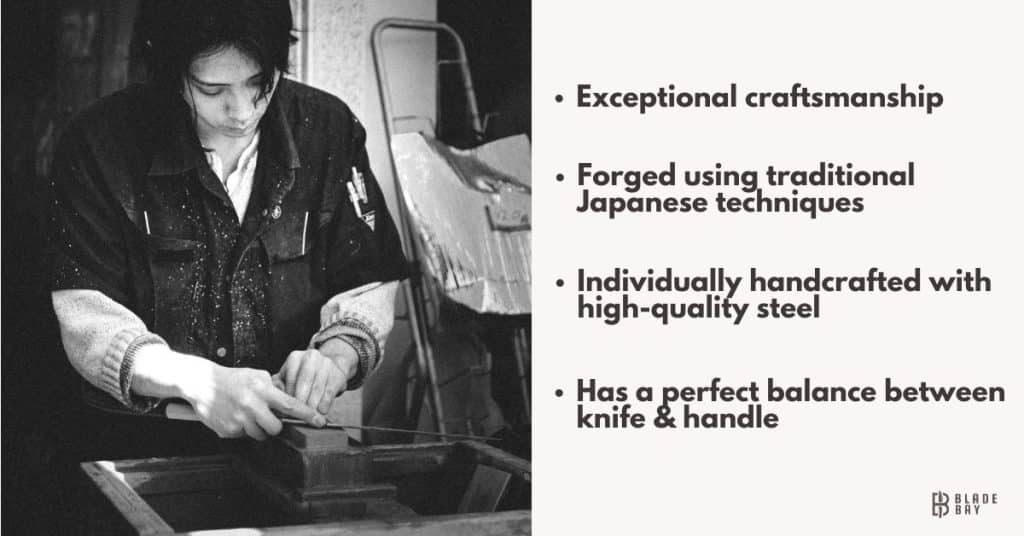
Handmade Japanese knives are renowned worldwide for their exceptional quality and craftsmanship. Unlike their Western counterparts, these knives are forged
using traditional techniques that have been passed down through generations of skilled craftsmen.
They are made from high-quality steel, and each knife is individually crafted by hand, resulting in a blade that is unique and unparalleled in terms of sharpness and durability. Also, the blades are made of harder and thinner steel, which can hold a sharp edge for a longer time compared to other knives.
Moreover, Japanese knives are designed to achieve a perfect balance between blade and handle, providing superior control and precision when cutting.
So, all these factors make Japanese knives highly suitable for precise tasks, which are common in professional kitchens.
Let’s see the basic anatomy of a handmade Japanese knife

Understanding the basic anatomy of a Japanese knife is essential when shopping for one. A typical Japanese knife is consisting of –
- Blade: The sharp, thin, and long part of the knife that does the cutting. Japanese knives typically have a single bevel, which means only one side is sharpened, unlike Western knives that have double bevels.
- Tang: The part of the blade that extends into the handle, providing balance and stability.
- Handle: Made of different materials such as wood, plastic, or horn, the handle provides a comfortable and secure grip.
- Bolster: A thick band of metal located between the blade and handle, which adds weight and balance to the knife.
- Heel: The thickest part of the blade, where it meets the handle. This part of the knife is used for heavier cutting tasks.
- Spine: The top of the blade, which is thicker than the cutting edge and adds durability to the knife.
- Tip: The pointed end of the blade, used for precision tasks such as intricate cuts or scoring.
- Bevel: The angled edge of the blade, which determines the sharpness and cutting ability of the knife.
Learn the difference between Western and Japanese knives.
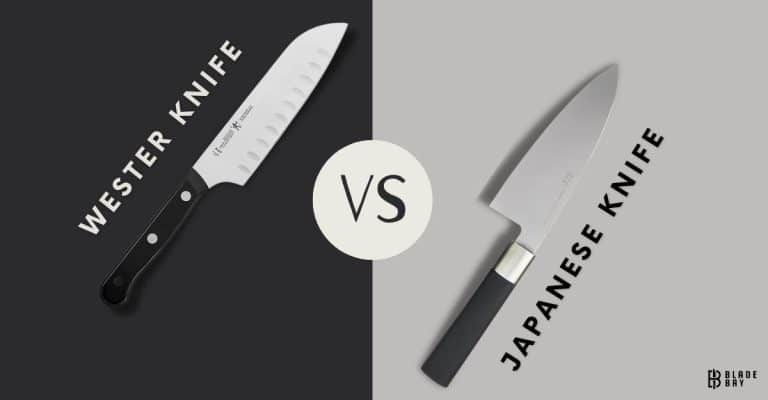
To have a better understanding of the overall architecture of handmade Japanese knives, it’s worth mentioning their differences from western knives. Let’s break down these key dissimilarities in an easy manner for you to understand.
Factors | Western Knife | Japanese Knife |
Knife Style | Features a lot of hefts with thick blades and curves | Much lighter with straight and thinner blades. |
Blade hardness | Western knives are tempered with a Rockwell hardness of 52 to 58. | Japanese knives on the other hand have a Rockwell hardness that lies between 58 to 65. |
Construction | Western knives are normally made of tougher steel that has less carbon | Japanese blades have harder steel with higher carbon content. |
Handle | The western-style knives typically have a full tang handle made of materials mostly wood, plastic, or metal. | The partial handle of Japanese knives also called a tang generally made of wood, bamboo, or lather. |
Blade Angle | The edge angle of western knives usually lies between 20 – 22 degrees. It makes them better suited for heavier-duty tasks like chopping meat and vegetables. | Japanese-style knives have a blade angle between 12 to 15 degrees and are excellent for slicing delicate ingredients like sushi or sashimi. |
Intended Use | Western knives are designed for heavier-duty tasks like chopping, slicing, and dicing.
They are often used in Western cuisine, which involves cutting through tougher ingredients like meat and root vegetables. | Japanese knives, on the other hand, are designed for precision cuts of delicate ingredients like fish, vegetables, and fruits.
They are often used in Japanese cuisine, which emphasizes the natural flavors and textures of the ingredients. |
Different types of hand-forged Japanese knives you will find in the market
If you’re looking to invest in a high-quality Japanese knife, you may be wondering what types are available on the market. Hand-crafted Japanese knives come in a variety of shapes and sizes, each with its unique purpose and design. However, to be more specific, there are two main categories in terms of Japanese knives:
Double-edged or hybrid knives
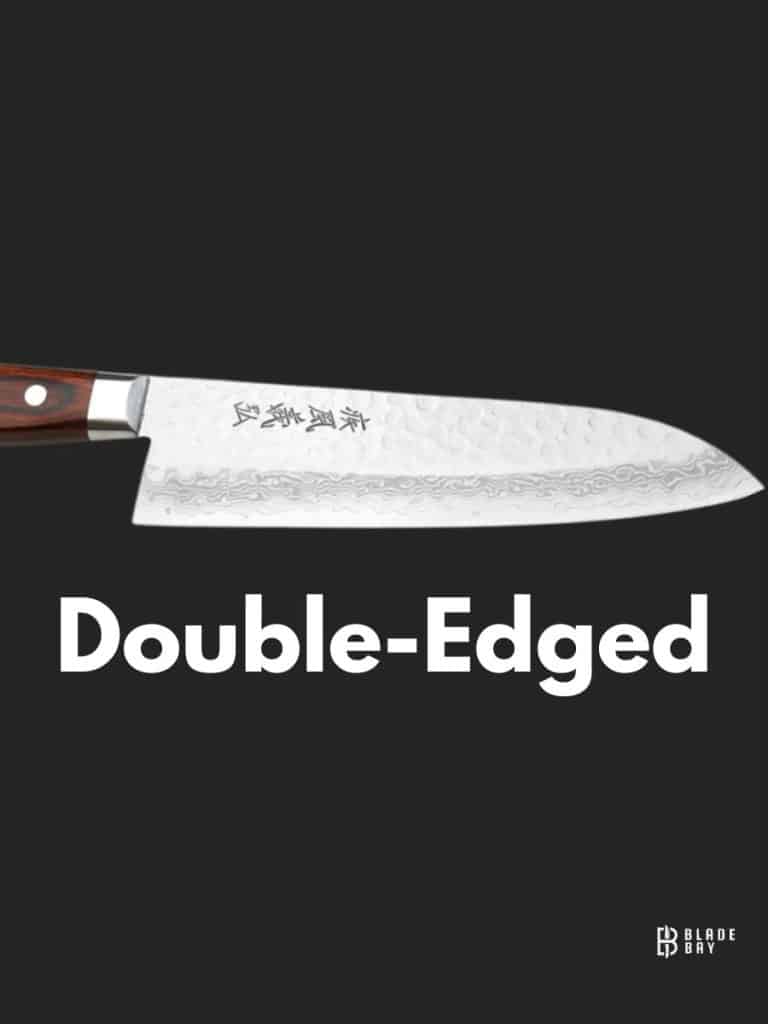
Hybrid Japanese knives are sharpened on both sides, with a double bevel. They offer the flexibility of being sharpened at either a 50/50 or 70/30 angle.
Gyuto: Gyuto is the Japanese version of a Western-style chef’s knife. It has a long and straight blade that tapers to a sharp point, which makes it ideal for slicing, chopping, and dicing vegetables, fruits, and meats.
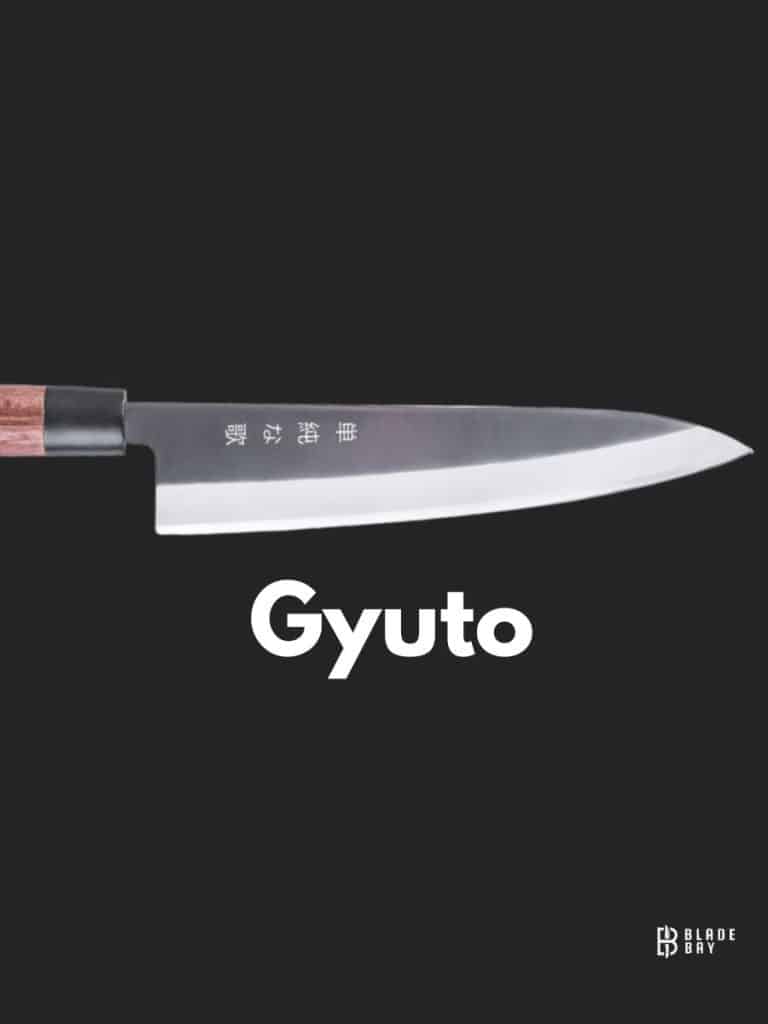
It has a thinner and harder blade than a typical Western chef’s knife, which makes it more precise and sharper. It usually ranges from 180-240mm in length and has a handle that is easy to grip.
Santoku: This is a general-purpose Japanese knife that is perfect for slicing, dicing, and chopping. It has a shorter blade than the Gyuto, usually ranging from 150-180mm, and a straighter edge.

It is often used for cutting vegetables and fruits, but can also be used for slicing fish and meat. Santoku knives are popular among home cooks because of their versatility and ease of use.
Nakiri: If you are looking for a Japanese vegetable knife, Nakiri is the most recommended one. This knife has a straight, double-edged blade. It is designed specifically for slicing and chopping vegetables with precision and ease.
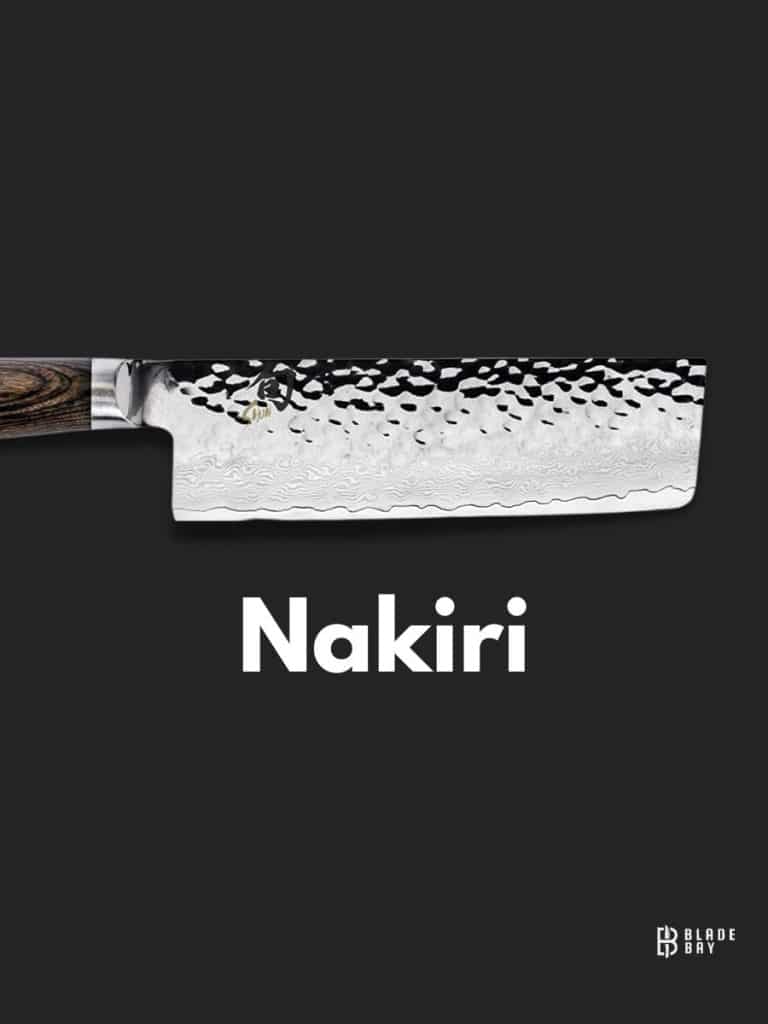
The thin, flat blade makes it perfect for cutting through tough vegetables like carrots and potatoes. Nakiri knives usually range from 165-180mm in length and have a rectangular shape.
Single-edged or traditional knives
Single-edged or traditional knives have a sharp blade on one side and a flat surface on the other. When it comes to traditional handmade Japanese chef knives you may find variations in terms of shape, finishing, and tip shape across different regions of Japan.
However, these following three types of knives are among the most commonly used and popular single-edged Japanese knives so far.
Yanagiba: Yanagiba is a long, thin, single-edged Japanese knife that is perfect for slicing raw fish for sashimi and sushi. It has a long blade that ranges from 210-300mm and a pointed tip that allows for precise cuts. It has a thin, hard blade that is perfect for slicing through delicate fish without crushing it.

Yanagiba knives require a lot of skill and practice to use effectively, but they are essential for preparing high-quality sushi and sashimi.
Deba: Deba is also a popular Japanese knife that is designed for filleting fish and cutting through the bones and cartilage. It has thick, heavy blades ranging from 150-210mm and a single-edged blade that is angled towards the right.

The heavy weight of the blade makes it easier to cut through bones and the thick spine of fish. Deba knives are essential for professional chefs who work with fish daily.
Usuba: Similar to Nakiri, Usuba is also a Japanese vegetable knife. However, unlike Nakiri, Usuba features a single-edged blade. It has a straight blade that is perfect for slicing through vegetables with precision and ease.
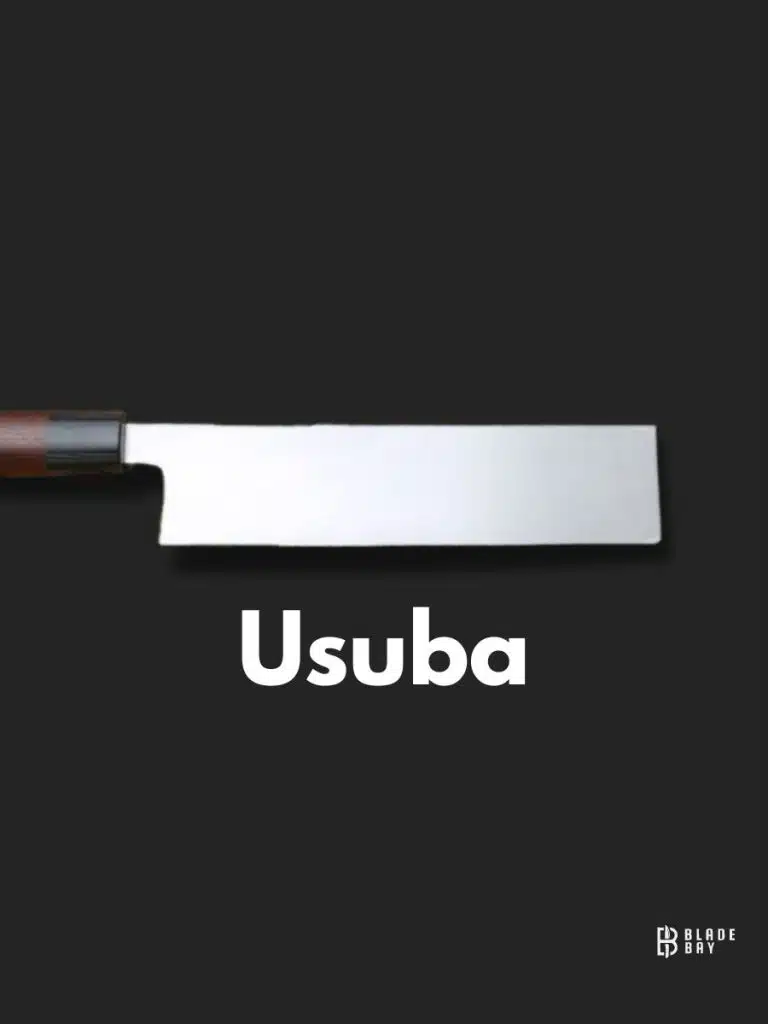
The thin, sharp blade makes it ideal for creating thin slices of vegetables for presentation purposes.
Most crucial things to look for before buying a handmade Japanese knife
If you’re considering investing in a handmade Japanese knife, there are several factors to keep in mind before making a purchase. Handmade Japanese knives are known for their high quality and durability, but they can be quite expensive. In this section, we’ll explore some of the most crucial factors to consider before buying a handmade Japanese knife.
Blade Material: One of the most important factors to consider before buying a handmade Japanese knife is the blade material. Japanese knives are typically made of high-carbon steel, which makes them harder and more durable than other types of knives.

Some popular types of steel used in Japanese knives include Blue Steel, White Steel, and Aogami Steel. Each type of steel has its own unique characteristics and qualities, so it’s important to do some research to find the one that best suits your needs.
Tips: Most preferable choice for blade material would be pure high-carbon steels. Why you ask? Well, for starters, high-carbon steel is known for its high carbon content, which makes it possible to forge the metal to a level of hardness that other steels just can’t match (we’re talking 60+ HRC!). And the best part? It’s incredibly easy to resharpen, so you can keep your knife in tip-top shape without too much effort.
Handle Material: The handle of a Japanese knife is just as important as the blade material. It’s important to choose a handle material that is comfortable and easy to grip, especially if you plan on using the knife for extended periods of time.
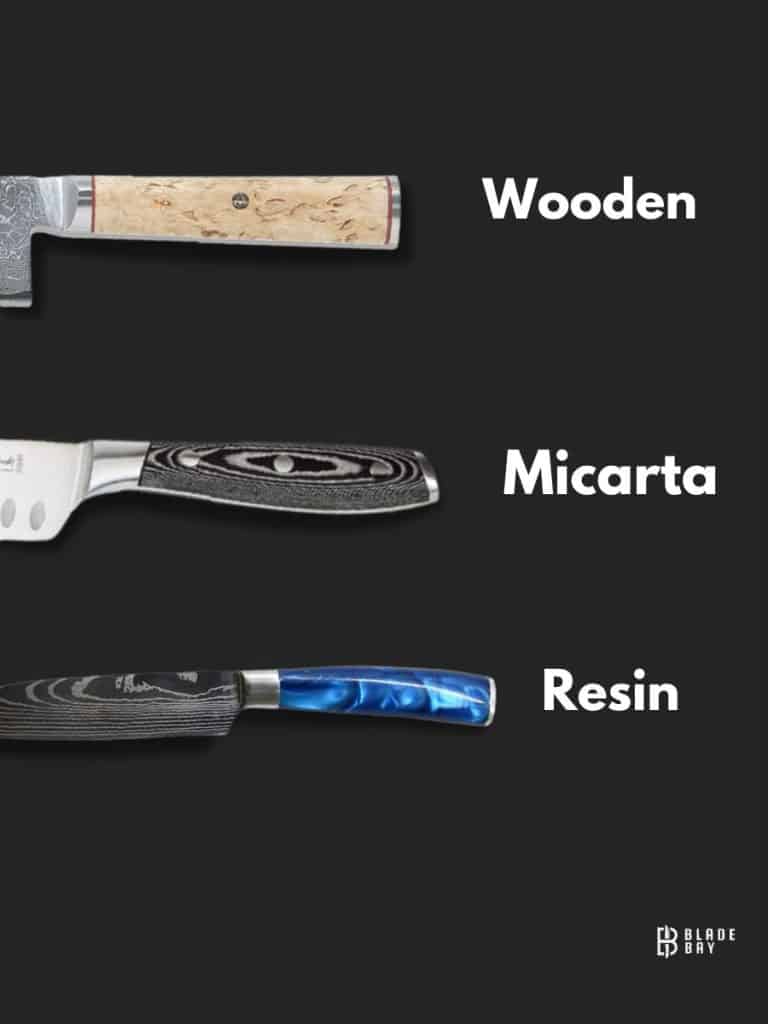
Some common handle materials include wood, resin, and micarta. Wood handles are popular because they are comfortable and provide a natural grip, while resin and micarta handles are more durable and resistant to moisture.
Tips: The best way you can properly feel a knife handle is to grip the handle and test it for some time to determine if it’s comfortable or not for a long-time use. Also, for an in-depth test run, you can purchase the knife and use it until the exchange time period set by the retailer you bought the product from.
Blade Shape: Another important factor to consider when buying a handmade Japanese knife is the blade shape. Japanese knives come in a variety of shapes and sizes, each with its own unique purpose and design. Some popular blade shapes include the Gyuto, Santoku, Nakiri, Yanagiba, and Deba. The blade shape you choose will depend on the type of food you plan on cutting and your personal preferences.
Tips: The best practice is to go for the Gyuto. As a classic Japanese kitchen knife, it combines the best of both worlds with a blend of Western and Japanese-style blades. And the versatility of this blade is unmatched – it can slice through vegetables, fish, and meat with ease, making it a must-have tool for any home cook.
Blade Thickness: You need to also look for blade thickness. It’s because thicker blades are typically more durable and can withstand heavy use, while thinner blades are more precise and allow for more control when cutting.

It’s important to choose a blade thickness that suits your specific needs and preferences. Because by choosing the right blade thickness, you can ensure that your knives perform at their best, allowing you to achieve perfect results every time you cook.
Tips: There is no such thing as perfect blade thickness as this factor depends on where you are using the knife on. For example, meat carving knives that have thinner blades appear to be the most effective, with a thickness of around 0.013″.
Thickness like these allows for a clean and precise cut, making it easier to create beautiful slices of meat for your dishes. On the other hand, for chef’s knives that will be used for chopping vegetables and other thicker foods, a slightly thicker blade of 0.017″ is often considered sufficient for most uses.
Brand Reputation: Finally, it’s important to consider the reputation of the brand before making a purchase. There are many different brands that produce handmade Japanese knives, but not all of them are created equal. Look for brands with a reputation for high quality and durability, and read reviews from other customers to get a sense of their experiences with the product.
Tips: There are a handful of handmade Japanese knife brands you can rely on before buying the best product for your kitchen. For example, check out these five top-rated Japanese knife brands –
- Shun Cutlery: With a focus on precision and quality, Shun Cutlery is a leading Japanese knife brand that has gained a reputation for creating some of the most beautiful and functional knives in the market.
- Global: Known for their unique design and sharpness, Global is a Japanese knife brand that has gained a global following for its ability to create knives that are both stylish and functional.
- Masamoto: As one of the oldest and most respected Japanese knife brands, Masamoto has been crafting high-quality knives for over 150 years. Their knives are known for their sharpness, durability, and precision.
- Miyabi: With a strong focus on craftsmanship and beauty, Miyabi is a Japanese knife brand that has become synonymous with excellence in the world of kitchen knives. Their knives are known for their exceptional performance and stunning design.
- Kai Housewares: As a brand that specializes in high-quality kitchen products, Kai Housewares has made a name for itself in the world of Japanese knives. Their knives are known for their sharpness and durability, making them a popular choice for professional chefs and home cooks alike.
Check out these amazing handcrafted Japanese knives
Enough talks about Japanese knife brands and stuff. Let’s get into actual products you can look for before spending money on them. Our suggestion for these four handmade Japanese cutleries covers almost all the crucial “before buying factors.” you can think of.
To start with,
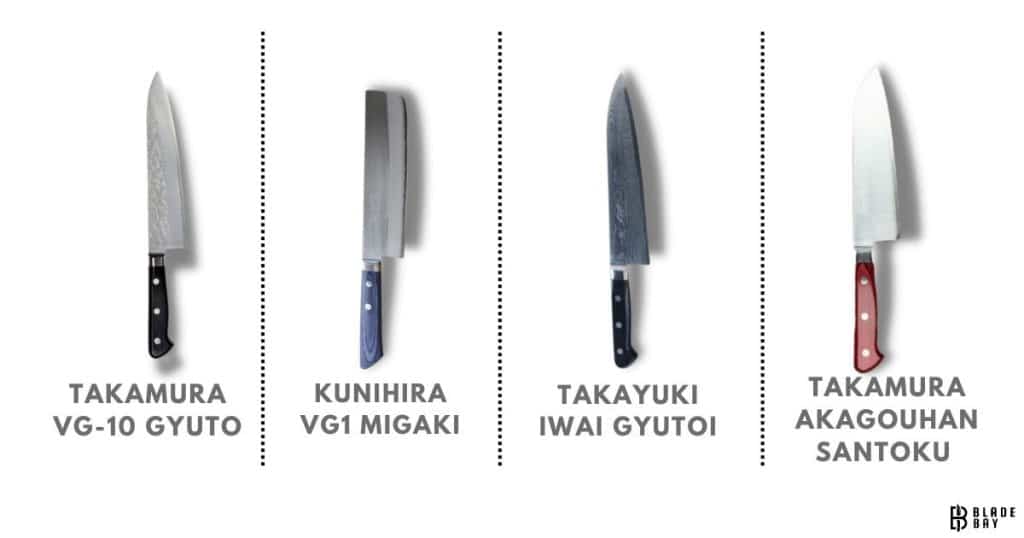
1. Takamura Akagouhan Santoku: The Takamura Akagouhan Santoku is a handmade Japanese kitchen knife that’s designed to impress. With a stunning red handle and a sharp, durable blade, this knife is perfect for slicing, dicing, and chopping your way through any recipe.
2. Kunihira VG1 Migaki Finished Usuba Japanese Knife: Handcrafted with precision and care, the Kunihira VG1 Migaki Finished Usuba Japanese Knife is a work of art that’s sure to elevate your culinary game.
3. Takamura VG-10 Gyuto: Takamura VG-10 Gyuto is handmade with care and precision, this knife features a sharp and durable blade that’s perfect for everything from chopping vegetables to slicing meat.
4. Takayuki Iwai Gyuto Japanese Knife: If you’re looking for a Japanese knife that’s truly a cut above the rest, look no further than the Takayuki Iwai Gyuto. Handmade with premium materials and finished with Kurouchi, this knife is built to last and designed to impress. Whether you’re a professional chef or a home cook, this knife is sure to become a go-to tool in your kitchen.
Where to find your traditional Japanese knife
While Japanese knives are becoming more popular worldwide, it can still be challenging to find authentic handmade products. The best place to start is to look for –
A reputable online retailer specializing in Japanese knives.
Alternatively, you can try visiting Japanese markets or specialized knife shops in your area.
Also, If you’re looking for a Sanjo area knife, you should head to the TsubameSanjo Regional Products Store in Niigata prefecture.
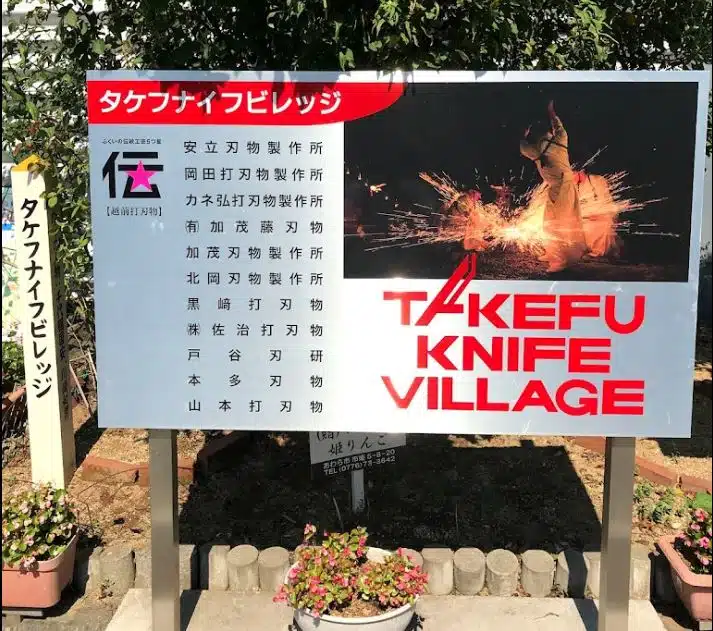
For a Takefu area knife, your best bet is to visit Takefu Knife Village.
And if you’re after a traditional Japanese knife from Sakai, then be sure to check out the Sakai Traditional Crafts Museum.
Bonus Tips and Tricks about maintaining the quality of your knife
Handmade Japanese knives are not only beautiful, but they’re also a valuable investment for any chef or home cook. Proper care and maintenance are essential to keep your knife in top condition for years to come. Here are some tips and tricks to help you maintain the quality of your knife after:
1. Hand wash your knife: Avoid putting your knife in the dishwasher as it can cause damage to the blade and handle. Instead, wash it by hand with a mild dish soap and warm water. Rinse the knife thoroughly and dry it immediately with a soft cloth.
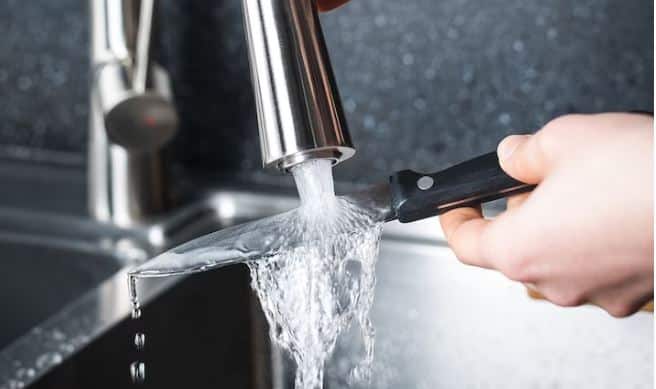
2. Sharpen your knife regularly: A sharp knife is not only safer but also more efficient. Use a whetstone or honing rod to sharpen your knife regularly. This will help maintain the edge and prevent dulling.

3. Store your knife properly: After use, always store your knife in a safe place where it won’t get damaged or knocked around. A knife block or a sheath is an ideal option to protect the blade and keep it sharp.

4. Avoid cutting hard objects: Japanese knives are designed for precision cutting, so avoid using them to cut hard objects like bones or frozen food. This can cause damage to the blade and affect its sharpness.
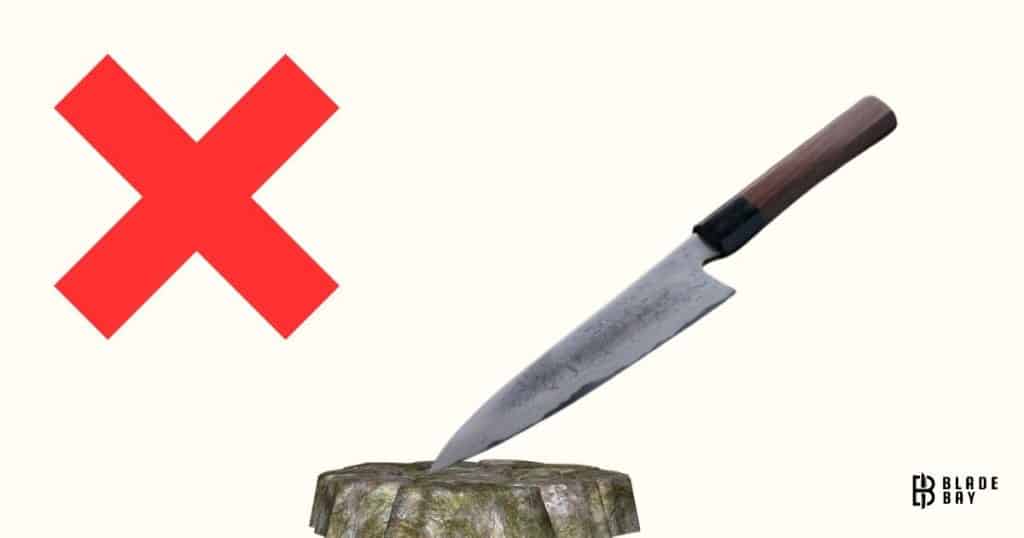
5. Use a cutting board: Always use a cutting board made of a soft material like wood or plastic to prevent damage to the blade. Avoid using hard surfaces like glass or stone, as they can cause the blade to dull quickly.
6. Dry your knife after use: Moisture can cause rust and damage to the blade, so it’s important to dry your knife thoroughly after use. Use a soft cloth to remove any moisture and prevent rust from forming.
So, do follow these tips and tricks to effectively maintain your knife’s longevity after you purchase one.
Final Verdict
In conclusion, we hope that this guide has proved to be a valuable resource for anyone interested in buying a handmade Japanese knife. From the anatomy of the knife to the different types available in the market, we have covered everything you need to know to make your purchase the right one.
We have also discussed the important factors to consider before buying a handmade Japanese knife, such as the blade material, handle, and craftsmanship. By following the tips and tricks mentioned in this guide, you can be ensured about getting the best hand-forged Japanese knife on hand and also able to keep it in top condition for years to come
FAQ
1. What are the best Japanese knives made of?
A: The best Japanese knives are typically made of high-quality steel such as VG-10, Aogami, and Shirogami, which are known for their durability, sharpness, and ability to hold an edge.
2. Do chefs prefer Japanese or German knives?
A: Chefs have different preferences, but many prefer Japanese knives for their lightweight, sharpness, and precision, while others prefer German knives for their durability and versatility.
3. Are Japanese knives expensive?
A: Japanese knives can be expensive due to the high-quality materials and the intricate craftsmanship that goes into making them by hand. However, there are also affordable options available for those on a budget.



